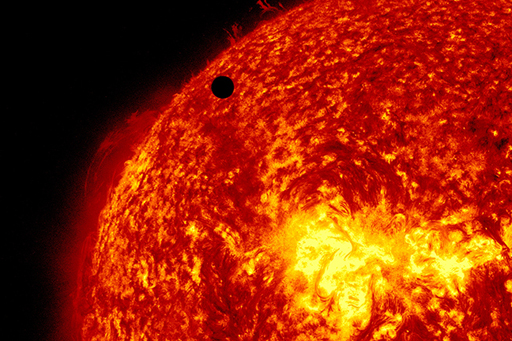4.3.5 Other information from transits
Transits can also provide additional information about the planet. The ‘dip’ in a star’s brightness during transit is proportional to the size of the planet.
Since the star’s size is known, the planet’s radius (but not its mass) can be deduced from the degree to which it dims during transit. If an exoplanet has an atmosphere, light from the star passing through the atmosphere will be absorbed at different wavelengths, depending on the composition of the atmosphere.
One problem with trying to observe a planetary transit is that it lasts only a short time compared with the length of time taken for the planet to orbit the star. A planet might take months or years to complete its orbit, but the transit would probably last only hours or days. Because of this, even when astronomers observe a star with a transiting planet, they are unlikely to see a transit in progress.
To get around this, observers have to scan the sky continuously for long periods of time. It then becomes more probable that at least some of the stars that are observed have planets, and some will pass between their star and the Earth.
Observing the same region of the sky for long stretches of time also makes it more likely that if a planet does transit its star, the event will be observed and recorded. To make sure that the transit is by a planet, and not a different object that just happens to be between observer and star, astronomers have to observe several transits occurring at regular intervals.
Only an automated telescope that records its observations over long stretches of time can effectively detect planets using this method. Several such projects are underway, using both ground- and space-based telescopes.
Another method of discovering planets is to search for protoplanetary discs, which you will find out more about in the next section.

